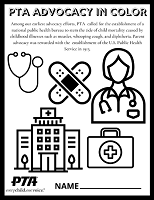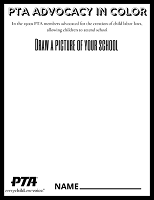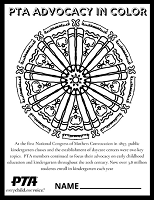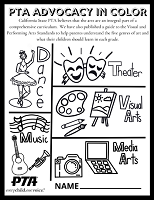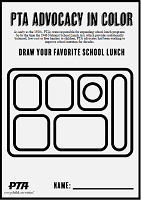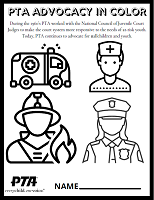by California State PTA Arts Education Committee
An A in the classroom is still the best grade. And we know putting the A in STEM, making it STEAM, is the right decision for all students. When schools include the arts as an integral part of their curriculum, they encourage students to be creative and find innovative solutions to real-world problems. Students learn to not be afraid of a blank canvas as they discover the world and become the leaders of tomorrow. PTA is committed to arts education and continuing to support art programs that bring families and children together.
PTA Reflections Art Program Happening Now In California
One way PTA can prioritize art for educators, families, and students is through the Reflections Arts Program. Reflections exemplifies PTAs long-standing commitment to arts education. The Reflections Program provides opportunities for recognition and access to the arts, which boosts students’ confidence and success in the arts and in life.
In schools throughout the country, local PTAs are promoting and celebrating PTA Reflections, collecting entries from students, and planning Reflections programs. Full information and “how-to”s for local leaders are available on the California State PTA Leaders Website. We look forward to the art that will be performed, photographed, and created from the 2022-2023 theme “Show Your Voice.”
Seeing how students express themselves through art is not only inspiring: it’s a conversation starter that can draw attention to arts education. We see this with the Reflections program as California students participate year after year. Most recently, California brought home many awards for the 2021-2022 Reflections theme “I Will Change the World By…”.
Student PTA Reflections Themes Submission Open Now
Each year, the Reflections theme is chosen from student submissions. Suggestions for the 2024-2025 Reflections theme are currently being accepted, and more information is available on the California State PTA website.
Student-created themes follow a long tradition, as does the Reflections program as a whole. Reflections was founded by Mary Lou Anderson, a National PTA Board Member and former Colorado State PTA President. The first theme, in 1969, was “Children and Youth, Mirror their World…” The PTA Reflections Program has since grown to include thousands of participants each year. Students today compete in six arts categories, including dance choreography, film production, literature, music composition, photography, and visual arts. Entries are divided by grade level and there is a division for Special Artists with learning differences.
PTA Arts Advocacy Continues With Support of Proposition 28
California State PTA has long encouraged its local leaders and members to work with their school districts to improve arts programs. We provide a wealth of information and resources to support that local advocacy.
Our advocacy advice goes further this year. California State PTA is urging support of Proposition 28 on the November 8 state ballot. We are also encouraging our local PTAs to campaign for the measure in their communities. California State PTA has strongly and actively advocated for a full curriculum that includes the arts for more than three decades. Based on that history, a study of the measure, and the strength of relevant organizational authorities, our Board of Managers voted to support Proposition 28.
The passage of Proposition 28 is expected to generate more than $900 million a year in dedicated new funding for arts and music education for all public schools across California – without raising taxes.
Keep the Conversation Going in Your Community
Generate excitement and bring PTA Reflections and other arts education programs to your schools and communities. We encourage PTAs in California to continue advocating for the arts through election day, throughout the school year and beyond.
Take a moment and share what art means to you, as well as what is happening at your school, by sending the California State PTA Arts Committee a note at arts@capta.org.
